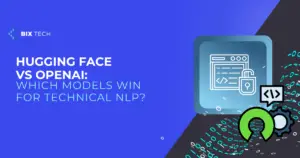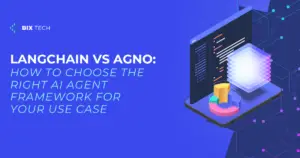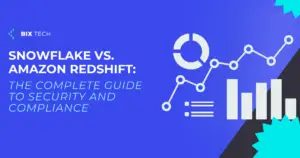Mastering AI for Business Leaders: A Practical Guide to AI Concepts, Learning Strategies, and Models

Sales Development Representative and excited about connecting people
Artificial intelligence (AI) is no longer the exclusive domain of tech experts. Today, organizations across every sector expect their teams to leverage AI tools and strategies as a core part of daily operations. In fact, many companies now encourage employees to attempt AI-driven solutions before seeking additional resources—making AI literacy an essential business skill.
But for business leaders without a technical background, navigating the complexities of AI can feel overwhelming. With more than 80% of AI projects failing—often due to poor data quality or underestimating project complexity—it's clear that a foundational understanding of AI is crucial for success. You don’t have to become an engineer, but knowing what AI can achieve and how it works will empower you to make smarter decisions, ask sharper questions, and lead confidently in an AI-first world.
In this comprehensive guide, we’ll break down AI’s key concepts, explore its core learning strategies and models, and showcase real-world business applications. Consider this your essential toolkit for integrating AI into your organization’s strategy.
The AI Landscape: From Subfields to Real-World Solutions
Despite AI’s transformative potential, its terminology often feels like a maze of buzzwords—machine learning, deep learning, generative AI, and more. These terms are closely related, but each describes a different layer in the AI ecosystem. Understanding these layers is the first step to making informed decisions about AI adoption.
Breaking Down the AI Hierarchy
Think of AI as a modern enterprise, where each department (or subfield) specializes in a different function:
The “Operations” team—focused on improving outcomes through data-driven learning.
The “Communications” team—making sense of and generating human language.
The “Quality Control” team—analyzing and interpreting visual information.
While each department has its own specialty, they often collaborate to solve complex business problems.
Techniques: The Methods Behind AI
Every AI system uses specific techniques—methods for learning from and acting on data. Think of techniques as the processes your teams use to achieve results. Understanding these methods helps you:
- Estimate the data, skills, and effort required for projects.
- Ask the right questions during project scoping.
- Evaluate technology partners and AI vendors.
Models: The Tools of AI
Models are the “tools” that result from applying techniques to data. They’re trained to recognize patterns and make predictions, much like an experienced employee who’s learned from years of on-the-job experience.
Applications: AI in Action
Applications are the products and features powered by trained models. These include:
- Chatbots that handle customer service inquiries,
- Recommendation engines for e-commerce,
- Fraud detection systems,
- Generative AI tools that summarize reports or create content.
Understanding these layers helps you determine what resources, skills, and infrastructure your business needs.
Practical Example:
A retail company used computer vision (subfield) and deep learning techniques to automate inventory tracking. The model identified misplaced items on shelves. The result? A 30% reduction in stockouts and improved customer satisfaction.
Actionable Takeaways:
- Learn the core subfields of AI and how they relate to your business challenges.
- When evaluating AI tools, clarify whether you’re assessing a technique, a model, or an application.
- Match your AI investments to the problems you want to solve and the resources you have.
How AI Systems Learn: Foundations for Business Leaders
Understanding how AI “learns” is key to setting the right expectations and choosing the right solutions for your company. AI mimics aspects of human learning—identifying patterns, drawing conclusions, and adapting over time—but it relies on different strategies depending on the type of task and data available.
Core AI Learning Strategies Explained
Let’s break down the main learning strategies you’ll encounter:
Models learn from labeled datasets—where each input has a known output.
Example: Training a model to predict customer churn using past records labeled “churned” or “retained.” Over time, the model identifies factors that signal high-risk customers.
Models search for patterns in unlabeled data, such as grouping similar customers based on purchase behavior.
Example: A marketing team segments thousands of customers to discover new target groups for campaigns.
Models improve through trial and error, receiving “rewards” for good decisions.
Example: Logistics companies use reinforcement learning to optimize delivery routes, rewarding outcomes that reduce delivery times and fuel costs.
Combines a small amount of labeled data with a larger pool of unlabeled data to improve accuracy without high labeling costs.
Example: An analyst labels a handful of product reviews, then uses semi-supervised learning to classify thousands more, occasionally double-checking the model’s predictions.
The model generates its own training signals from raw data, enabling efficient learning at scale.
Example: Training language models by asking them to predict missing words in sentences, ultimately mastering language context.
Additional Approaches: Beyond Machine Learning
- Rule-Based Systems (Symbolic AI):
Use human-written “if-then” logic for consistent, transparent decision-making.
Example: Automating loan eligibility checks—if the applicant’s credit score is below a threshold, deny the loan.
- Neuro-Symbolic AI (Hybrid AI):
Combine rule-based logic with machine learning’s adaptability for more interpretable and robust solutions.
Example: A contract analysis tool extracts clauses with ML, then applies legal rules for compliance checks.
Case Study:
A financial services firm combined supervised learning for transaction categorization with rule-based checks for regulatory compliance. This hybrid approach reduced manual review time by 60% while maintaining auditability.
Actionable Takeaways:
- Match your business goals to the appropriate AI learning strategy.
- Always ask vendors or technical teams about the data requirements for their AI solutions.
- Consider hybrid approaches for tasks requiring both flexibility and explainability.
Real-World AI Use Cases: From Concept to Impact
AI isn’t just buzzwords—it’s driving tangible value across industries. Here are a few practical business applications:
- Customer Support:
AI chatbots resolve common inquiries, freeing up human agents for complex issues.
- Sales Forecasting:
Predictive models analyze historical sales data to estimate future demand, improving inventory planning.
Computer vision models assist doctors by identifying anomalies in medical images, supporting faster and more accurate diagnoses.
Machine learning models analyze transaction patterns, flagging suspicious activity in real time.
Recommendation engines tailor product suggestions to individual users, boosting engagement and sales.
Case Study:
A global e-commerce platform implemented AI-powered recommendation engines, resulting in a 25% increase in average order value and a 15% boost in repeat purchases.
Actionable Takeaways:
- Start with pilot projects targeting high-impact, data-rich business areas.
- Measure outcomes regularly and iterate based on performance.
- Invest in upskilling teams to ensure ongoing AI adoption and success.
Building Your AI Playbook: Next Steps for Business Leaders
To succeed in an AI-powered landscape, business leaders must cultivate a foundational understanding of AI concepts—regardless of technical background. This empowers you to:
- Scope projects effectively,
- Set realistic expectations,
- Navigate vendor conversations confidently, and
- Drive innovation with AI as a core business asset.
Conclusion
AI is rapidly reshaping business, making a baseline understanding of its models, strategies, and applications essential for every leader. By mastering these core concepts and taking actionable steps, you’ll be well-positioned to drive meaningful results with AI—no engineering degree required.
Ready to lead your team into the future? Start building your AI knowledge base today and transform your organization’s approach to innovation and growth.









